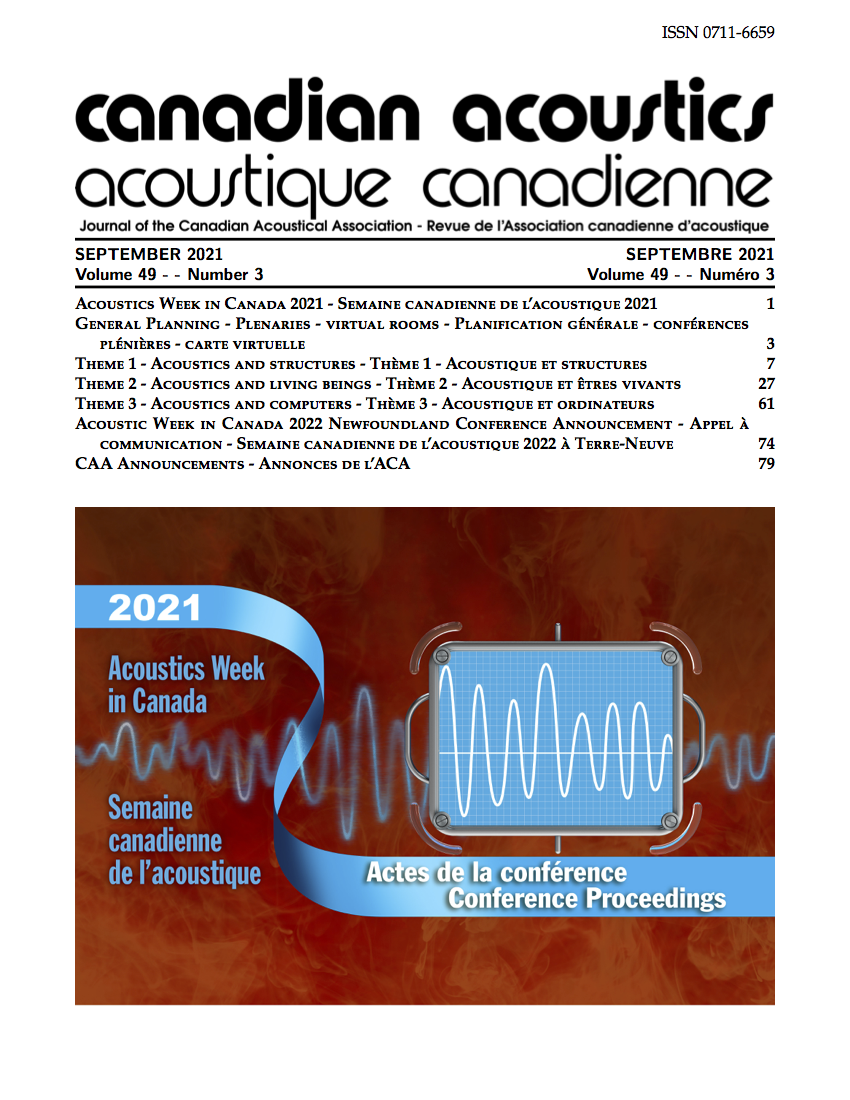Bio-Inspired Flow Velocity Microphone: Acoustic Simulation of Possible Encapsulating Packages
Abstract
With the emergence of voice assisted devices in the consumer’s electronics industry like smart speakers and wireless earbuds, there is a need to design voice capture systems that are more robust to background noise and reverberation. Current directional far field audio capture systems are based on omnidirectional microphone arrays or pressure gradient microphones with dual ports that provide bidirectional polar pickup patterns. The fundamental sensing mechanism of such systems is based on ‘acoustic pressure’ sensing which is scalar quantity in nature, with no directional information. On the opposite, the use of thin bio-inspired nano hair follicles as sensors (mimicking the jumping spider auditory sensing mechanism, for example), enable “acoustic particle velocity” sensing that is vectorial quantity carrying spatial information. This inherent directional nature of acoustic particle velocity enables the development of novel and compact directional microphones.The current research focuses on the acoustic design and optimization of the sound ports and signal paths for the encapsulating packages that will house the flow velocity element. It aims at defining the optimal package design to successfully integrate this kind of velocity microphone into various consumer use cases by retaining or improving the acoustic performance of the bare (a.k.a. un-encapsulated flow sensing element. Several package configurations have been investigated, starting with the ideal “out-of-plane” sensing (open pipe channel with inlet and outlet port), while the technical challenges and the possible design recommendations were derived from multiphysics modeling conducted using COMSOL (pressure acoustics & thermoviscous) simulations. The key acoustic performance targets of MEMS microphone, such as shifting resonant frequencies above audio frequency range to achieve flat sensitivity and directivity, for such out-of-plane configuration are presented with appropriate validation against analytical expressions.
Additional Files
Published
How to Cite
Issue
Section
License
Author Licensing Addendum
This Licensing Addendum ("Addendum") is entered into between the undersigned Author(s) and Canadian Acoustics journal published by the Canadian Acoustical Association (hereinafter referred to as the "Publisher"). The Author(s) and the Publisher agree as follows:
-
Retained Rights: The Author(s) retain(s) the following rights:
- The right to reproduce, distribute, and publicly display the Work on the Author's personal website or the website of the Author's institution.
- The right to use the Work in the Author's teaching activities and presentations.
- The right to include the Work in a compilation for the Author's personal use, not for sale.
-
Grant of License: The Author(s) grant(s) to the Publisher a worldwide exclusive license to publish, reproduce, distribute, and display the Work in Canadian Acoustics and any other formats and media deemed appropriate by the Publisher.
-
Attribution: The Publisher agrees to include proper attribution to the Author(s) in all publications and reproductions of the Work.
-
No Conflict: This Addendum is intended to be in harmony with, and not in conflict with, the terms and conditions of the original agreement entered into between the Author(s) and the Publisher.
-
Copyright Clause: Copyright on articles is held by the Author(s). The corresponding Author has the right to grant on behalf of all Authors and does grant on behalf of all Authors, a worldwide exclusive license to the Publisher and its licensees in perpetuity, in all forms, formats, and media (whether known now or created in the future), including but not limited to the rights to publish, reproduce, distribute, display, store, translate, create adaptations, reprints, include within collections, and create summaries, extracts, and/or abstracts of the Contribution.


